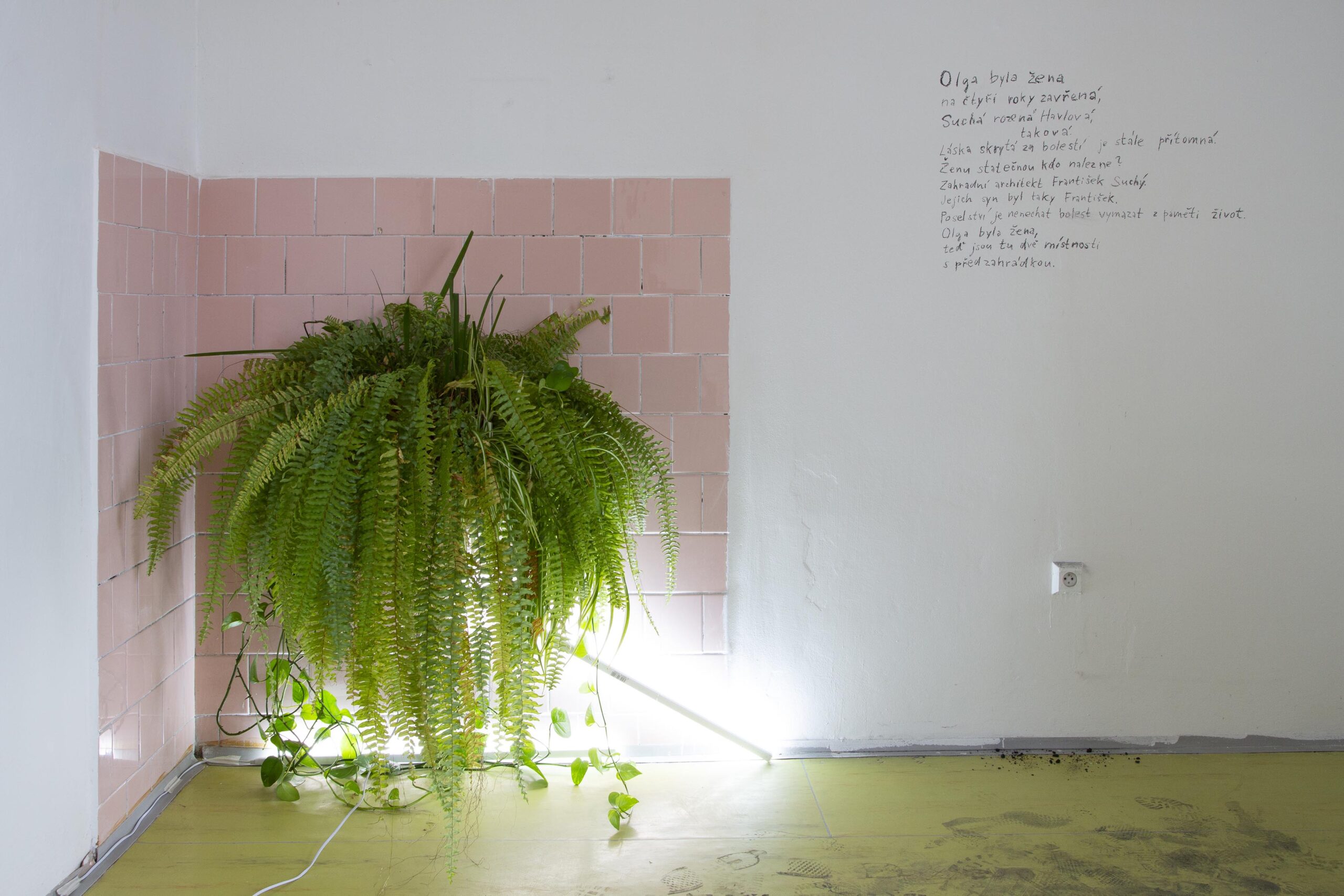
25th International Festival of Contemporary Art
4+4 DAYS ON THE MOVE
EVERYTHING IS DIFFERENT
DITA LAMAČOVÁ
+ guest Barbora Dayef, Veronika Holcová, Ondřej Skala (aka JTNB), Lenka Vítková
Curator: TEREZIE NEKVINDOVÁ
In the installation, which breathes the funeral atmosphere of Strašnice, Dita Lamačová, in collaboration with invited artists, draws primarily on her current activities within the Bubahof art association, which she co-founded. Bubahof operates out of a house within the Strašnice courtyard a few streets away from the festival site, and is now also starting to operate the nearby Olga community space. In doing so, the exhibition interrogates more general questions of care for the whole and, as a result, accentuates the disappearing and laboriously recreated memory of place, things and people.
Bubahof was founded years ago as a platform that prides itself on its independence: from institutions or public support. It concentrates artists' studios, spaces for residencies, especially abroad, and other activities. But it also means a shared living space, a "breeding ground" for joint projects of its inhabitants and other friends. I don't mention soil by accident, ecological and permaculture principles are inherent in Bubahof: the formerly dismal concrete area of the courtyard is now a garden with flowers and fruits, where the inhabitants of the house spend time together and where cats lazily bask on sunny days (the association is named after one of them). And as the house in the middle of the courtyard stands outside the street system of the city, this community is also an outlier from mainstream society. It is a different form of living together, in which relationships that are not subject to hierarchies and an emphasis on ecological behaviour - not only towards nature but also towards each other - play an important role.
Bubahof has recently stepped outside the walls of the courtyard, with similar meticulous care he has restored the forgotten Strašnický Park, named after František Suchý, the director of the local crematorium who risked his life during World War II by secretly recording the names of those executed by the Nazis, and by extension after his son, who faced communist persecution with equal bravery when he was involved in further preserving the memory of the victims of communist atrocities. In this park, among other things, the Bubahof has for the second year organised a festival inviting all those who are interested to join the white tables. The legacy of the Suchy family can also be found nearby in the Olga community space, named after the wife of the director of the crematorium, also persecuted and imprisoned, which was created this year thanks to Dita's art association. In commemorating her, Bubahof sympathetically emphasises the importance of caring and creating facilities, in something as important as the great deeds of heroes.
Dita Lamačová remains the hostess of this exhibition, gradually inviting other artists, her friends and girlfriends to join her. The result is a multi-layered installation dominated by a table symbolically connecting the two rooms and referring to the community projects in Strašnice. Barbora Dayef is the author of the ceramic plates that were used for the neighbourhood lunch in František Suchý Park last year and this year. On the dishes without glaze, subtle traces of food remained as a memory, which are further developed in the drawing by Veronika Holcová. Ondřej Skala has created a soundtrack from recordings of these two meetings and Lenka Vítková has made Olga Suchá's legacy present in her texts on the walls. In the second room, covered in heavy velvet, Dita's projection is running, implying impermanence, or death. She intersperses slow-motion footage from a night at the cemetery in Strašnice, filmed directly for the exhibition, with other "inputs" from videos made in the past years, which share a common repetitiveness and fragmentation. In them, he focuses on banal scenes, at first glance uninteresting. But perhaps these are the images that our brains remember from our lives. I have long been interested in what really sticks in my memory of the moments I want to keep. But instead of pleasant encounters or beautiful places associated with feelings of joy and happiness, I more often find myself revisiting a situation that wasn't particularly interesting, just better imprinted in my mind. I always get frustrated, trying to manage my memories doesn't work out at all. So what will be the final choice if it is true that just before we die our whole life flashes before our eyes? Will it be the most important moments or a random series of images? And who is actually composing the powerpoint?